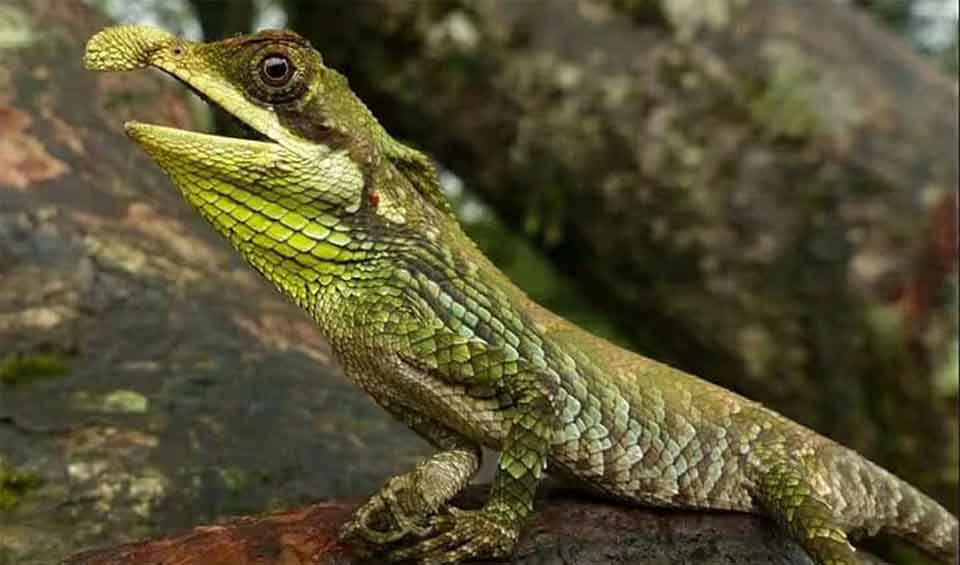Ceratophora – Horned lizards
Their horns are actually modified scales and can vary in size and shape depending on the species
A genus of small, fascinating lizards found only in Sri Lanka, an island nation in South Asia. These lizards are often referred to as “horned lizards” because many species in this genus have a unique horn-like structure on their snouts or heads. This horn is not just for show; it plays a role in communication, species recognition, and possibly even in courtship. The Ceratophora genus is a perfect example of how animals can develop unusual and specialized features to adapt to their environment.
One of the most distinctive characteristics of Ceratophora lizards is the horn-like projection on their heads. This “horn” can vary greatly in size and shape depending on the species. For example, in the species Ceratophora stoddartii, the horn is short and stubby, while in Ceratophora tennentii, the horn is long and thin. These horns are made of soft, flexible tissue rather than hard bone, and scientists believe they may help the lizards recognize each other and possibly attract mates.
These lizards live in the dense, moist forests of Sri Lanka, often at higher elevations where the environment is cooler and wetter. They are primarily ground dwellers but can also be found climbing on low branches or rocks. Ceratophora lizards are insectivores, meaning they primarily eat insects like ants, beetles, and small flies. They have quick reflexes and a sticky tongue, which they use to catch their prey with precision.
Ceratophora lizards are known for their shy and reclusive nature. They prefer to stay hidden under leaves or among rocks, coming out mainly during the early morning or late afternoon when the temperature is more comfortable. Because of their secretive habits and the dense forests they live in, these lizards are not often seen by people, making them somewhat mysterious creatures.
Species in this genus
Leaf-nosed lizard
The “leaf” on the its nose is actually a soft, fleshy projection, not a true leaf or hard structure
Rhino-horned lizard
Has the ability to “puff up” their bodies to make themselves appear larger and more threatening



